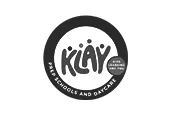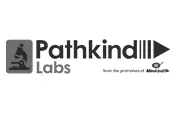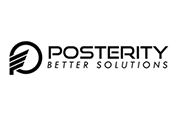What is Corporate Training and Development?
Workplace learning, or corporate training, encompasses a series of activities to educate
employees. This process benefits companies and empowers individuals to acquire and refine
knowledge and skills for their professional and personal growth.
In more giant corporations, talent development teams are responsible for training employees; in
smaller businesses, human resources take the lead. They are tasked with identifying training
program themes and requirements, ensuring accessibility for employees, and developing strategies
and roadmaps for employee experience and progression
Often, employees need help recognising the value of corporate training programs, perceiving them
as focused on exposing weaknesses or being limited to their current roles. Consequently,
the role of Learning and Development (L&D) is transitioning from
controlling learning to facilitating it.
Today's Workplace Learning
The demand for enhanced workplace learning is at an all-time high. A survey conducted by
LinkedIn revealed that 94% of employees expressed their commitment to staying with a company
longer if it invested in their professional development. Additionally, 90% of top management
recognises the importance of investing in employee career growth for the organisation's
overall
progress.
Acknowledging the significance of workforce development, what comes next? While implementing
"standardised" training programs may ensure content delivery, it does not guarantee
effective
knowledge transfer or employee engagement, which are crucial for corporate advancement.
Furthermore, your workforce encompasses individuals with diverse responsibilities,
experiences,
expertise, and skills. Tailoring training programs to meet their specific needs and
requirements
will enhance learning efficiency and maximise return on investment.
Well-designed Learning and Development (L&D) initiatives empower
employees to acquire the knowledge and skills necessary to enhance their performance and job
satisfaction, ultimately leading to higher employee retention.
What Are the Benefits of Corporate Training Programs?
The success of any company hinges on the importance of corporate training You directly benefit your organisation by supporting your employees in expanding their knowledge and refining their professional skills.
Enhanced Productivity
When you provide well-crafted training programs tailored to the needs of your workforce, you can expect increased efficiency, leading to improved profitability for your company in the long run.
Heightened Motivation
Training initiatives that foster teamwork and unity among individuals, teams, and departments can have a positive impact. When employees understand how their roles contribute to the organisation's overall goals, they develop a sense of purpose and a stronger connection to the company's success.
Reduced Employee Turnover
Recent surveys indicate that modern professionals seek more than just a paycheck.
Millennials,
in particular, value flexibility, opportunities for professional growth, and a sense of
meaning
in their work. If dissatisfied with their current position, they are more likely to seek
new
opportunities elsewhere.
Employers bear the costs associated with employee turnover, with estimates from Gallup
suggesting that replacement costs can amount to at least half of an employee's annual
compensation. By actively engaging and retaining employees, businesses have a clear
financial
incentive to maintain a productive workforce.
Fostering a Company Culture
Aligning comprehensive training programs with your corporate values and strategies goes beyond meeting basic requirements. It showcases your commitment to making long-term investments in your employees. Robust learning opportunities communicate that each individual matters to the company, reinforcing a positive company culture.
What Constitutes an Effective Training Program?
Undoubtedly, opinions on what constitutes an ideal training program vary. However, the reality is that there is no one-size-fits-all formula for the perfect program. Nevertheless, there are certain fundamental elements that universally contribute to successful training programs, regardless of industry, workforce size, program objectives, geographical location, or demographics.
Relevance and Need
The knowledge and skills imparted to learners must be current, pertinent, and applicable to their daily responsibilities. It should enable them to expand their abilities and competencies while being easily understandable for quick learning and practical application. Additionally, it is crucial to identify who requires training and determine the specific topics and skills to be taught. For instance, your sales team may need customer service training if there are customer dissatisfaction issues. Alternatively, management may benefit from change management training if your organisation is undergoing a merger.
Alignment
All training provided to employees should align with the company's overall goals. Instead of asking individual employees about their desired or necessary training, focus on the desired business outcomes and the skills needed to achieve them. Then, collectively, decide on the specific skill sets employees should develop and the required learning experiences.
Goal-oriented
Training programs should be designed with clear objectives in mind. Key performance indicators (KPIs) should be selected to measure the program's effectiveness, efficiency, quality, quantity, and timeframe comprehensively.
Manager Input
Active involvement of managers is essential to increase employee engagement in learning. According to a LinkedIn survey, 56% of employees would allocate more time to their training if their supervisors directed or recommended specific programs that they believed would enhance their skills.
Innovative Approaches
Workplace learning is evolving, incorporating entertaining, bite-sized, and relevant activities to enhance employee engagement. Moving away from traditional trainer- led sessions or boring online presentations resembling PowerPoint slides opens up opportunities for more creative and interactive learning methods.
Follow-up Training
Companies invest significant sums in employee training annually without truly knowing its effectiveness. Incorporating follow-up activities such as brief feedback sessions lessons or exercises to reinforce newly acquired concepts and conducting face-to-face can ensure understanding and active implementation of the learned material.
What Are the Goals of Training Programs?
Organisations implement training programs for various reasons and objectives. The following are the primary goals typically associated with training programs:
Personal and Professional Development
Training programs aim to support employees in their current roles while preparing them
for
future opportunities. Topics covered range from job-specific knowledge to
enhancing soft skills
such as leadership.
Career development is significant from both the employee's and the company's
perspective.
The
company strives to enhance employee productivity to achieve business objectives,
ensuring
the
ideal alignment between job requirements and individuals.
Simultaneously, employees benefit from professional growth, career advancement,
increased
income, and personal development, contributing to job satisfaction and a sense of value
beyond
the workplace.
However, a significant disparity exists between the investment companies make in
professional
development compared to personal development. Personal development encompasses non-
work-related
training, such as wellness initiatives or pursuing personal interests like cooking.
Studies
suggest investing in employees' personal growth helps
attract and retain talent.
Here's an overview of the outcomes professional and personal development programs can offer:
- Provide employees with career advancement opportunities aligned with the company's
objectives,
goals, and strategies.
- Enhance or maintain knowledge and skills related to current job responsibilities.
- Foster personal growth by developing individual talents and soft skills.
- Foster personal growth by developing individual talents and soft skills.
- Cultivate individuals who are well-rounded contributors to the community and
experience
greater
happiness.
Onboarding: New Hires or Transitions
The significance of onboarding training programs for new employees
is
often underestimated by
companies. Surprisingly, 22% of businesses need a structured onboarding process, and 49%
consider their approach only moderately successful.
New hires typically require time to adjust, experience anxiety, and may feel
disconnected
from
the rest of the team. Alarmingly, 33% of new employees actively seek new job
opportunities
within their first six months, and 22% even consider changing careers within the initial
45
days.
Implementing a robust onboarding process effectively manages the experience of new
hires,
reduces turnover costs, and enhances overall productivity. Research shows that employees
who
undergo a well-structured onboarding program are 58% more likely to stay with the
company
after
three years.
Training Requirements
Periodically, certain companies conduct organisation-wide training seminars to educate
their
entire workforce on pertinent subjects. The extent and content of these programs are
influenced
by factors like the company's industry or geographical location.
During these seminars, employees receive updates on regulations, and procedures, and
engage
in
discussions about crucial topics such as workplace etiquette, diversity, and
occupational
health
and safety.
For instance, public sector staff often undergo mandatory occupational health and safety
training, while both private and public organizations are legally obligated by industry
regulations to provide
sexual harassment training to their employees.
What Are the Various Segments of Corporate Training?
Orientation
From the moment a newly hired employee steps foot in the workplace, orientation training begins and continues until they can independently carry out their responsibilities. Its primary objective is to streamline the induction process by creating a sense of comfort and productivity for the new employee.
The onboarding training program can be tailored, but it generally consists of two components:
- General training for all new hires, which covers essential company information such as its history, mission, vision, values, and corporate policies and regulations.
- Specific training for the employee's particular role, focusing on the development of necessary knowledge and skills required for their new job.
Compliance Education
As part of new hire onboarding, compliance training is often included and
is mandatory. This structured program primarily addresses corporate regulations and
guidelines,
enabling employees and employers to prevent workplace issues and legal disputes.
These regulations and procedures typically pertain to specific industry segments, and
the
requirements for compliance and the type of training may vary based on location.
Examples of
compliance training include programs on anti-harassment, diversity, company ethics,
workplace
safety, data protection, and privacy.
Hard Skills Training
Continuous growth is essential for your team, regardless of their level of expertise. Employee development focuses on hard skills, as this type of training enables employees to enhance the specific abilities they need for their roles and personal growth. Ongoing training ensures they stay up-to-date with the latest advancements.
Soft Skills Training
Soft skills training should not be overlooked, as
the
behaviour of your
staff is as important as their knowledge. Studies have shown that by developing soft
skills,
employees can positively impact the company's profitability and significantly increase
return on
investment (ROI).
Soft skills encompass areas such as communication, decision-making, and problem-solving,
which
are vital for effective interpersonal relationships. They enable employees to interact
productively and amicably with colleagues and customers, enhancing customer service,
attracting
new clients, and fostering a cohesive team.
Product Knowledge Training
Product knowledge refers to the ability of your
staff to accurately
assess and confidently communicate with customers about your products and services. This
includes understanding their features, benefits, applications, and pricing. Offering product knowledge training as part of a new
hire's
onboarding program is beneficial, and it also helps
employees stay updated on new features and releases.
Enhancing product knowledge is a targeted approach to boosting your company's revenue
and
achieving key performance indicators (KPIs) related to customer satisfaction.
What Are the Key Types of Training Programs?
Ensuring your chosen modes and channels for delivering workplace training are engaging is crucial. Nothing frustrates employees more than being compelled to undergo compliance training that is both "required" and "boring."
Instructor-Led Training in Classrooms
Traditional Approach
This method is widely employed and mirrors the
teaching methods commonly
used in educational institutions. On average, organisations dedicate 42 percent of their
training hours to this type of training. It involves a trainer delivering instructions
to a
group of employees in a classroom setting, often accompanied by a PowerPoint
presentation.
Undoubtedly, there are advantages to this approach, especially the opportunity for
personal
interaction. Conventional ILT allows employees to ask
questions
directly to trainers, which
might remain unanswered in other formats. Furthermore, it facilitates the development of
relationships between employees and trainers, as well as among the employees themselves.
However, this method lacks opportunities for practice and scalability, and it can be
quite
expensive. It requires the continuous presence of an instructor and may become
challenging
as
more employees join, limiting the interpersonal connections that are the strength of
this
method. To maintain morale and energy, incorporating shorter sessions, breaks, and
dedicated
discussion and practice times is recommended.
Interactive Training
This approach takes standard classroom-style training
to a more engaging
and entertaining level by incorporating group activities and interactions. It includes
smaller
group discussions, role-playing, case studies, demonstrations, and even games.
As one-third of employees find training often uninspiring and inhibiting creative
thinking,
this
strategy is recommended to enhance overall engagement and foster the development of
essential
soft skills.
Interactive training has its benefits, as it promotes knowledge transfer in various
ways,
allowing participants to learn from and exchange information with one another while
maintaining
high energy levels. However, it is important to consider different trainee personas to
ensure
that all participants, including those who are less extroverted or introverted, feel
included
and can maximize their learning experience.
Training on the Job
On-the-job training skips theory and immediately dives into
practical
experience. It enables employees to gain hands-on experience in their roles, often
starting
from
day one. This training style can be helpful for employees who dislike lengthy
lecture-style
sessions, as it helps them retain more information and knowledge through direct
practice.
However, it's important to note that some employees prefer to grasp concepts before
engaging
in
practical application. Understanding which employees would benefit from this approach is
crucial. Another way to incorporate this method without fully committing is by having
employees
shadow someone in a similar role while on the job.
eLearning
Online learning is gaining popularity, with more companies opting
for this training
method. As a readily available professional development tool, 77 per cent of
organisations
offer
some form of online instruction.
Advanced learning technologies allow for a better understanding of participants'
behaviour
and
learning progress, making online training programs easier to scale. Utilising
online learning platforms like PlayAblo
enables
the
inclusion of interactive and adaptive components in your
training programs.
Given that employees are often busy with their work, this delivery approach allows them
to
learn
at their own pace and convenience. While online learning may limit the personal
connections
of
face-to-face training programs, it opens up a new realm of possibilities, such as
unlimited
practice or immersive experiences.
Face-to-face interactions can be reserved for addressing misconceptions or weaknesses
identified
through real-time learner data.
Blended training is an alternative if you wish to
maintain the trainer relationship. As the name suggests, blended training combines
online
training with traditional in-person sessions.
Why Should You Choose Online Training?
Transitioning to online learning is recommended if your current classes are exclusively instructor-led or if corporate training is your main focus. While some advantages of eLearning have been previously discussed, the most compelling reason to adopt it is its superior effectiveness. Here's the evidence to support this claim:
What Are the Best Practices for Corporate Training?
To design impactful training programs, it is crucial to employ best practices that provide tangible proof of successful learning outcomes. Consider the following innovative tactics, keeping in mind that each organization's needs may vary and select the most suitable options accordingly.
Active Learning Approach
Encouraging employee engagement in mandatory
training programs can be
a challenging task for Learning & Development staff. Constantly reminding employees to
complete
required programs can be tiresome. To address this, incorporate active learning
techniques
to
motivate employees to actively participate in training.
Active learning, also known as Pragmatism or Experientialism, emphasizes the practical
application of real-world knowledge, fostering learning through firsthand experiences
rather
than abstract concepts alone.
A successful training program begins with a foundational strategy that encourages
employees
to
internalise concepts and put them into practice. However, it is crucial to focus on
topics
that
are immediately relevant and applicable to individuals in their day-to-day work, while
also
preparing them for future roles.
For departments dealing with sensitive information or where errors or miscalculations
can
have
severe consequences, it is essential to move beyond basic training concepts. This can be
likened
to "safety training," as it allows individuals to experiment with new behaviours in a
training
environment without fearing negative outcomes or making career-limiting decisions.
Such an approach enables them to explore and learn without the fear of being judged. For
example, a financial advisor handling millions of dollars would benefit from practising
various
financial scenarios, learning from both successes and mistakes. This practical
experience
would
enhance their readiness to handle similar situations in real-world scenarios.
Ultimately, the essence lies in comprehending and experiencing how specific behaviours
manifest
in real-life situations. It is vital to uplift self-esteem, provide realistic
experiences,
and
offer encouragement when experiments don't go as planned.
Simulating environments enables staff to explore new ideas within a safe atmosphere.
Active
learning promotes better information retention, allowing individuals to successfully
transfer
newly acquired skills back to their work environment.
Goal-oriented Assessment
To optimise your training programs and address any
challenges, start
by asking yourself key questions such as "What skills do employees possess?" and "What
skill
gaps exist?" Assess your current workforce's strengths and weaknesses to determine
whether
your
existing programs suffice or if additional training is necessary. This approach will
guide
the
development of targeted courses.
Aligning the assessment strategy with the company';s goals and supporting the training
process
is crucial. Consider how the results will be documented and whether sufficient relevant
data
exists to make a comprehensive evaluation of employee performance at the end of the
training
program.
Learner analytics, available on various online learning systems,
provide real-time data to
monitor the effectiveness of training programs and report return on investment (ROI) to
executives. Leveraging this data is essential, as it allows for pinpointing areas where
learners
excel or struggle, facilitating continuous improvement of existing content rather than
relying
on guesswork or starting from scratch.
Adaptive Learning
As companies strive to automate and personalise their
training programs in
the technology-driven era, online learning is gaining prominence. While technology can
never
fully replace the personalised touch of face-to-face interactions, certain tools can
bridge
the
gap to some extent.
Digital-guided active learning, also known as
adaptive learning, enables a more personalised
training experience. Employees learn only what is most relevant to them, at their
preferred
pace
and location, through tailored experiences that accommodate various job
responsibilities.
For instance, a single program can adapt to cater to the specific needs of employees in
different roles, ensuring relevance and effectiveness.
How to Personalise Learning by Grouping Learners Across Several Business Divisions?
The utilisation of online platforms enables students to reinforce their learning by actively
applying and practising their skills.
To reduce reliance on instructor-led training (ILT), companies can leverage online
environments
to scale their training programs and supplement in-person sessions.
When delivering training that caters to all employees, it is beneficial to divide them into
groups with similar needs. By understanding the context in which your employees operate, you
can
provide targeted training that directly impacts their day-to-day work. Here are a few
examples
of potential grouping criteria:
- Division - Organise employees based on their respective departments such as marketing, sales, customer success, project management, or engineering.
- Function - Group employees according to their roles, whether they are executives, managers, associates, or contributors.
- Location - Consider employees'; job functions in conjunction with their physical location, whether they primarily work in the office, remotely, or are frequently on the go.
- Tenure - Create groups based on the number of months or years employees have been with the company, particularly useful for one-time onboarding training materials.
-
Communication Style -
Take into account employees' communication preferences
and patterns, such
as whether they predominantly communicate in the office, work remotely, or have a
hybrid
arrangement.
By strategically grouping employees based on these criteria, training programs can be tailored to meet their specific needs, enhancing overall effectiveness and relevance.
How to Align Training Programs with Business Goals?
To initiate the process, it is crucial to
identify your general learning objectives,
requirements, expectations, and the training goals of your target audience. Asking pertinent
questions will lay the groundwork for a comprehensive training needs analysis.
Once the overarching goals and objectives are established, you can shift your focus to the
curriculum and course specifics. Incorporate the findings into a comprehensive corporate
training plan that outlines your learning vision, goals, and specific requirements.
Before delving into the selection of training tools, we recommend consulting your IT
department
to determine the necessary software for implementing eLearning (we will discuss choosing
training tools later).
How to Select Online Corporate Training Software
To effectively create, produce, and manage your online training initiatives, you will require a suite of digital tools. Let's explore some essential applications that will facilitate your journey:
Learning Management System (LMS)
An indispensable component of training management is a Learning Management System (LMS). Think of the LMS as the central hub that:
- Manages and stores courses
- Provides learners with access to content
- Assigns, delivers, and tracks results
Consider your corporate LMS as the "mission control" for all your training endeavours. An ideal LMS should offer efficient course editing capabilities, robust tracking mechanisms, and comprehensive reporting functionalities.
Authoring Software
Assuming you have an LMS in place for training administration, what about the actual
educational
content? To produce online courses in-house, you will require authoring software.
Authoring tools typically come as a bundled package or suite of applications that enable
the
creation of various eLearning materials, ranging from simple courses to interactive
elements,
assessments, videos, and games. These tools may vary in complexity and
user-friendliness, so
it
is advisable to test them before making a purchase.
If you are new to online training, opt for authoring software with a user-friendly
interface
and
straightforward design. For instance, PlayAblo allows anyone to immediately create e-courses
without prior expertise. This authoring toolkit enables the development of engaging
eLearning
content such as slide lectures, quizzes, video lessons, dialogue simulations, and
interactive
elements.
By carefully selecting the appropriate learning management system and authoring
software,
you
will equip yourself with the necessary digital infrastructure to effectively deliver and
manage
your online corporate training initiatives.
How to Use PlayAblo to Improve Online Corporate Training?
To optimize your corporate training using PlayAblo LMS, consider implementing the following strategies:
Customise Learning Paths
Start by incorporating customised learning paths. Utilise baseline testing to assess the skills each new hire has already mastered. Learners who demonstrate proficiency can be exempted from redundant training, enabling them to focus on acquiring new skills. PlayAblo allows you to create unique learning routes by combining various content elements such as courses, quizzes, video tutorials, and more. You have the flexibility to determine the order of chapters and set completion criteria.
Organise Webinars
Transform your physical classroom into a virtual one by organising webinars. PlayAblo LMS seamlessly integrates with Google Meet web meetings, making it easy to arrange live training events. Invite learners, track attendance, and facilitate interactive sessions where you can share presentations, videos, and screens. Engage participants through polls and receive immediate feedback from your staff.
Give Learning Certifications
Recognise personal achievements and provide a pathway for career advancement through learning certification programs. With PlayAblo, you can define the parameters for certification programs. Once learners successfully complete all program activities, the LMS automatically generates a certificate in their name. You can even personalise the certificate with your company's logo and upload it as a template.
Offer Diverse Learning Opportunities
Cater to the diverse needs of learners by incorporating various learning opportunities. Move beyond traditional lectures and tests. Utilise PlayAblo to include elements such as:
- A brief film to welcome your students;
- e-books that serve as job aids and manuals;
- An interactive game for determining the baseline competency level of learners;
- A lecture or an eLearning lesson;
- A step-by-step demonstration of a method or operation in a class;
- A hands-on exercise, game, or display of abilities;
- Finally, a verdict.
By diversifying the learning experience, you can engage and motivate learners throughout the curriculum.
Embed Gamification
Explore the concept of gamifying learning to enhance learner engagement. PlayAblo LMS allows you to transform existing PowerPoint presentations into interactive games by incorporating personalised questions and interactivity. By gamifying the learning experience, you can create an immersive and enjoyable environment that motivates learners to actively participate.
Use Communication Skills Assessments
For
training customer service and sales teams,
assessing
communication abilities is crucial. Leverage PlayAblo to create realistic dialogue
simulations
with branching scenarios, assessments, real-life characters, and simulated environments.
This
enables your team to practice and refine their communication skills in a safe and
controlled
setting.
By implementing these strategies within PlayAblo LMS, you can elevate the effectiveness
of
your
corporate training, fostering a dynamic and engaging learning environment for your
employees.
What Is the Cost of Implementing an LMS?
Implementing an online learning approach involves financial investment. According to
research by
the Brandon Hall Group, LMS costs typically account for 38% of the average learning
technology
budget, resulting in an annual corporate LMS expenditure of approximately $70,614.
The
pricing models for LMS services vary among
providers and commonly include the following
options:
- Pay-per-learner A fixed fee is charged for a specific number of students.
- Pay-per-active-learner The fee is based on the number of students who actively use the LMS during the billing cycle.
- Pay-as-you-go You only pay for the specific features and functionalities you utilize.
- Subscription A predetermined fee is determined based on the chosen elements and the number of users.
- Open Source Access to the LMS program is free, but you are responsible for setting it up, customising it, and hosting it.
By considering these pricing models, you can choose the most suitable option for your organisation's budget and requirements.
How to Choose the Right Corporate Training Pricing Plan for Your Company?
How Can I Reduce My LMS Costs?
To cut your LMS expenses, it's essential to carefully consider the features and settings
provided by LMS providers. As a new customer, you can save money by acquiring only the
services
you will actually utilise in the first year and closely monitoring the size of your
learning
audience.
Start by having a plan or a list of ideas for introducing online learning to your target
audience. Determine which pricing plan aligns with your company's financial goals, and
reach
out
to LMS providers to explore how their solutions can assist you. Ask each service
provider
the
following questions:
- Can the pricing plan be changed and how frequently?
- What are the baseline costs of their pricing model?
- Do they charge a setup fee for new customers?
- What kind of customer service or training do they offer?
- Are they willing to match or beat a competitor's pricing?
It's important to prioritise your fundamental requirements and avoid investing in features that do not add value to the learning experience or align with your company's learning strategy.
What’s the Future of Organisational Training?
Looking ahead, organisational training needs to adapt to the evolving workforce. By
2025,
millennials will comprise over 75% of the workforce, and they prioritize simplicity,
innovation,
originality, and adaptability. Training programs that embody these qualities will become
increasingly crucial.
Workplace flexibility is a growing trend, not just in terms of location but also in job
assignments. Employees are seeking basic skill sets that can be transferred across
departments
and industries. Additionally, there is a need for "21st-century" skill sets and
social-emotional
learning components to meet the expectations of the digital-native generation.
Creating, distributing, and managing organizational knowledge is an ongoing process
throughout
the employee lifecycle.
With an LMS like PlayAblo, you can ensure a continuous learning curve. PlayAblo's
comprehensive
learning management system delivers corporate training and manages all your content
needs
from a
single online platform. It is particularly useful for onboarding new employees and
equipping
them with the necessary knowledge and skills.
Lastly, it's crucial to develop a training program that looks to the future rather than
the
past. This approach fosters meaningful partnerships between L&D leadership, business
leadership,
and senior management, ensuring the success of the training program.
What’s the Role of an LMS in the Employee Lifecycle?
Creating, distributing, and managing organizational knowledge does not come with a fixed timeline. Learning and development is a continuous process that covers the complete employee lifecycle. And with an LMS like PlayAblo in place, you can ensure a continual learning curve. PlayAblo’s full-fledged learning management system delivers corporate training to your employees and allows you to manage all your content needs from a single, online platform. It is handy while onboarding new employees and then equipping them with the required knowledge and skills -- essential for them to perform efficiently. PlayAblo can help put your training modules on auto mode and administer everything from a remote location.
Our Clients








































